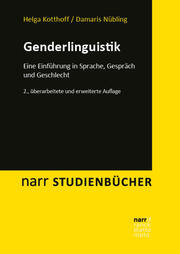Verstellung und Betrug im Mittelalter und in der mittelalterlichen Literatur (gebundenes Buch)
Verstellung und Betrug im Mittelalter und in der mittelalterlichen Literatur
Aventiuren 7, Aventiuren 7
Erschienen am
09.12.2015
Bibliographische Informationen
ISBN/EAN: 9783899718805
Sprache: Deutsch
Seiten: 279 S., 3 Fotos
Auflage: 1. Auflage 2015
Bindung: gebundenes Buch
Beschreibung
Es gehört zu den Topoi der Mediävistik, dass Außen und Innen der Protagonisten ein hohes Maß an Kongruenz aufweisen. Diese Kongruenz wird auch im vermeintlichen Kaufmannssohn Tristan thematisiert. Der Tristan-Stoff und das Nibelungenlied bieten viel diskutierte Beispiele einer zumindest temporär erfolgreichen Verstellung und eines temporären Aufhebens dieser Kongruenzbeziehung. Doch auch außerhalb dieser bekannten Fälle gibt es - zum Teil sehr viel erfolgreichere, zum Teil vollständig misslingende - Beispiele für Verstellungen: Die im Band versammelten Aufsätze diskutieren beispielsweise Fälle wie die angelsächsische Genesis B, Herzog Ernst, Alexanderroman oder Friedrich von Schwaben. Beispiele aus dem Minnesang, aus der Aristoteles- und Phyllis-Tradition und aus der Mystik werden ebenso diskutiert.
Autorenportrait
Prof. Dr. Matthias Meyer lehrt Ältere deutsche Literatur an der Universität Wien. Alexander Sager ist Professor für deutsche Literatur an der University of Georgia in Athens, Georgia, USA.
Leseprobe
One of the well-known topoi of medieval literature is the high degree of congruity between the outer and inner character of the protagonist. This congruity is also discussed where it does not appear to exist, for instance in the supposed merchant's son Tristan. This already shows where and how the notion of congruity between the outer and inner person - and thus the possibility of disguise - reaches its limits (at least in narrative terms). The Tristan theme and the Nibelungenlied offer much-discussed and well-known examples of at least temporarily successful disguise, a temporarily broken congruity. Going beyond these well-known cases there are other examples of dissimulation - some much more successful, and others complete failures. The essays in this anthology discuss cases ranging from the Anglo Saxon Genesis B to Herzog Ernst, the Alexander romance and Friedrich von Schwaben, aspects of Minnesang and the Aristotle and Phyllis tradition as well as mysticism.>
Weitere Artikel aus der Kategorie "Sprachwissenschaft, Literaturwissenschaft"
Lieferbar innerhalb ca. einer Woche

Vergriffen

Derzeit nicht verfügbar

Lieferbar innerhalb 14 Tagen






